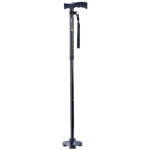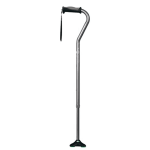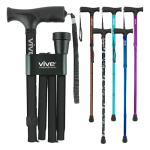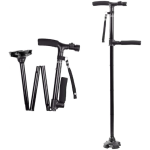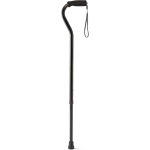 It’s a known fact that a suitable cane improves the mobility of an elderly person significantly, so care must be taken when looking for the most appropriate product according to their needs. For instance, older adults suffering from arthritis or neurological impairments need medically tested canes, not walking sticks.
It’s a known fact that a suitable cane improves the mobility of an elderly person significantly, so care must be taken when looking for the most appropriate product according to their needs. For instance, older adults suffering from arthritis or neurological impairments need medically tested canes, not walking sticks.
Other aspects to consider are grip, material, and the tip of the cane. Still, modern versions boast numerous other features, such as a foldable shaft, bending feet, and a built-in flashlight.
Finding the perfect cane may require time and attention to detail, but it isn’t a hard task as the market is filled with excellent options.
Recommended Walking Canes in 2024
HurryCane Freedom Edition Folding Cane With T Handle
It also has a strong aluminum shaft that’s adjustable to the user’s height and a reliable derby handle. To top it all off, its quadpod feet with three suction cups prevents slipping even on earthy or slippery terrain.
But what makes HurryCane truly special is the joint that connects the rod to the base. The rotatable connection mimics the motion of an ankle, providing traction and increasing balance.
Pros |
|---|
Cons |
|---|
Hugo Mobility Quadpod Offset Cane With Ultra Stable Cane
Still, the most interesting features are found at its endpoints. At the top is the offset handle, considered to be the safest type. Essentially, users are able to place their weight at the center of the cane, which is the most stable point.
Furthermore, a small button hidden at the side of the grip controls the height of the shaft, and a simple push is enough to change it.
At the bottom are the special quad base legs. They move the suction cups apart from each other, making the cane stand firmly on its own while also enabling the person to safely walk on grass or even snow.
Pros |
|---|
Cons |
|---|
Folding Cane by Vive for Men & Women
Being so portable and lightweight, this cane is perfect for traveling. Still, it’s resilient enough to withstand 250 pounds. Additionally, it has an integrated wrist strap, which prevents the user from dropping it on the ground or leaving it behind.
Moreover, the foldable cane sports a derby handle that reduces hand fatigue and muscle cramp. As for the tip, it ends in a single-point rubbery foot, which can be a bit limiting when it comes to passing rough terrain. Luckily, the model is compatible with quad base legs.
Pros |
|---|
Cons |
|---|
Folding Cane With LED Light by RUNZI
Its handle at first seems like a regular derby handle until you notice the LED flashlight at the end, a tool that’s extremely useful during nighttime bathroom visits. It’s even possible to adjust the light direction to 60 degrees up and down.
The cane ends in a pivoting joint capable of rotating the quadpod tip in all directions. To top it all off, the bottom has four anti-skid pads positioned in such a way that they form one big circle, therefore maximizing their grip.
Pros |
|---|
Cons |
|---|
Medline Gel Grip Aluminum Cane
Additionally, this lightweight cane is made from aluminum, and its weight capacity is up to 300 pounds. Unfortunately, the shaft can’t be folded, but its height is easily adjustable with a push-button lock pin system.
Pros |
|---|
Cons |
|---|
Best Cane Materials for Seniors
There are two major factors that strongly affect the quality of a cane: weight and sturdiness. As such, the right material is different for each person.
As a general rule, frail older adults and recovering patients should use lightweight canes that don’t put too much strain on their movement. On the other hand, people above average weight should pick a product manufactured with a strong alloy capable of supporting the whole body. Take into consideration the following information when deciding which material your cane should be made of:
Wooden Canes
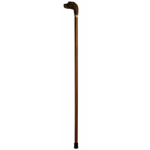 Wooden canes balance durability and weight well, but they also have serious flaws. Most manufacturers tend to create wooden walking sticks instead of canes, which aren’t foldable and can’t be adjusted.
Wooden canes balance durability and weight well, but they also have serious flaws. Most manufacturers tend to create wooden walking sticks instead of canes, which aren’t foldable and can’t be adjusted.
Moreover, wooden canes are more likely to wear away through constant use or get splintered if the proper coating is neglected.
Aluminum Canes
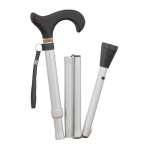 Aluminum is the standard material that most walking canes are made of. This material is light and strong, withstands the weather, and adds a stylish elegance to the cane.
Aluminum is the standard material that most walking canes are made of. This material is light and strong, withstands the weather, and adds a stylish elegance to the cane.
Aluminum is also easily bent and shaped to accommodate important features, such as a foldable shaft and a rotatable joint for a more natural tip.
The only downside of this type of walking cane is that it has an exact weight limit that it can handle, a detail that requires special attention.
Steel Canes
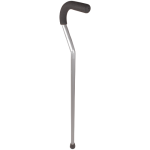 Steel is rarely used for canes, as it makes them too heavy to be carried around all day.
Steel is rarely used for canes, as it makes them too heavy to be carried around all day.
Seniors and patients with weak joints, such as those suffering from arthritis, are suggested to avoid this type of cane. Since the steel shaft acts like an anchor that requires constant effort to move, it may potentially harm the joints even further.
Still, patients with a larger build and good arm strength looking for a more long-lasting product may benefit from purchasing a steel cane.
Carbon Fiber Canes
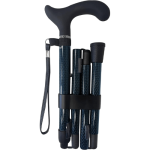 Carbon fiber is the optimal material, as it marries all the benefits of the previously mentioned canes. It’s lightweight, strong as titanium, weatherproof, and can come in an array of colors.
Carbon fiber is the optimal material, as it marries all the benefits of the previously mentioned canes. It’s lightweight, strong as titanium, weatherproof, and can come in an array of colors.
Carbon fiber canes are suitable for both seniors and recovering patients regardless of their weight or injury type. However, the material makes these canes quite expensive. Aluminum products of the same caliber are cheaper and just as reliable.
Best Cane Feet for Seniors
The cane’s tip is its sticking point. Environmental factors are the focal point here – when matching the right terrain, the feet can improve the walker’s balance and prevent falls.
Single Point
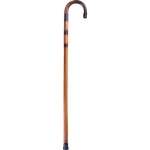 Single-point tips are the standard style for house-bound seniors and patients. These types of tips are small in size and have a rubbery nature, which makes them perfect for traversing between rooms, as they stick easily to wooden and glazed surfaces.
Single-point tips are the standard style for house-bound seniors and patients. These types of tips are small in size and have a rubbery nature, which makes them perfect for traversing between rooms, as they stick easily to wooden and glazed surfaces.
Moreover, experts point out that single-point soles are the best option for people dealing with only arthritis problems.
Quadpod
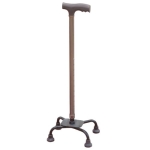 The main purpose of a quad base leg is to provide stability in every situation. The four suction cups help the user keep their balance on uneven terrain, such as a grainy driveway, sand, or a grassy backyard.
The main purpose of a quad base leg is to provide stability in every situation. The four suction cups help the user keep their balance on uneven terrain, such as a grainy driveway, sand, or a grassy backyard.
Additionally, this type of endpoint is best for patients suffering from neurological impairments. Quadpod canes are also recommended for people who start walking after a long illness, as they boost the user’s confidence.
Best Cane Handles for Seniors
The aspects of the cane’s head shouldn’t be overlooked by customers, as it’s the part most responsible for comfort and weight distribution.
Round Handles
This traditional design offers a good grip and a large curved surface to lean on. Plus, the cane is easy to hang.
Still, you’ll only come across it with walking sticks because the design is unsuitable for patients with disabilities.
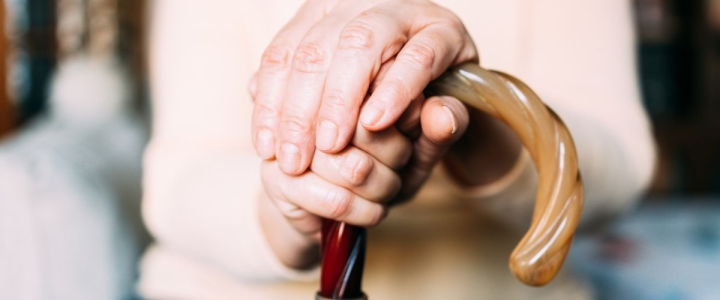
Derby Handles
Unlike their round counterparts, derby handles are much better when it comes to reducing the weight pressure from the user, which in turn helps those suffering from joint problems.
Such handles are convenient to grab or lean on while still looking stylish. Since the main head is unfit for hanging the cane, most products come with an attached strap.
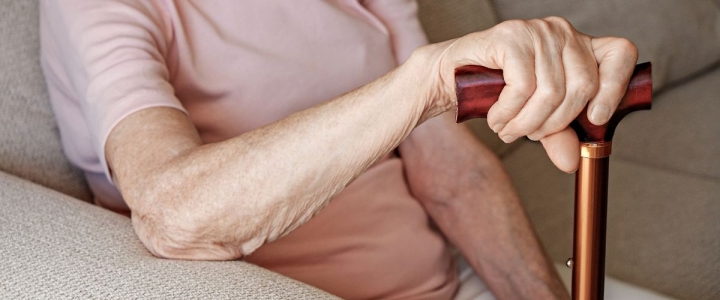
Offset Handles
Offset handles are undoubtedly the best at distributing the user’s weight evenly. They’re designed to encourage people to rely on the cane’s head without fear as they focus the bodyweight onto the center of the cane.
In this sense, the chances of falling with this handle are the lowest.
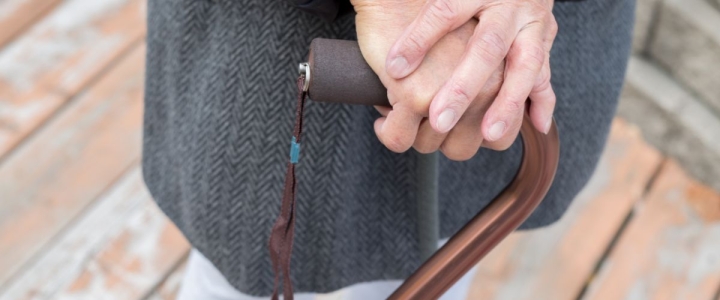
Best Walking Canes Depending on the Situation
When looking for a walking cane, it’s also essential to choose the one that best fits the user’s needs, as each situation requires a specific type of cane.
- Best canes for knee pain: choose one that provides support, stability, and comfort. Offset handle canes with quadpod feet meet those requirements and help users relieve pressure on the aching knee.
- Best canes for hip replacement: after hip replacement surgery, patients should use a quadpod feet cane, which improves balance and provides maximum stability.
- Best canes standing issues: as the user leans their body to stand up, they need maximum support to direct their body weight when pushing up. So, it’s essential to look for a cane that stands a high weight capacity.
- Best canes for sciatica pain: people who live with this type of pain rely on a cane for longer periods, so their cane needs to provide as much comfort as possible. Therefore, the best option is to go for canes with ergonomic handles that provide extra comfort and reduce strain on the wrist.

Fall Safety Net
Proper walking canes contribute significantly to the senior’s feeling of safety and overall protection, but they don’t completely eliminate the possibility of a fall.
Walking aids are helpful when traversing uneven terrain, but they do very little if a person suddenly experiences dizziness or something more serious like a heart attack. To prepare for health-related emergencies, the best idea is to opt for a medical alert system.
Contrary to canes – which are preventive tools – personal emergency response systems are designed to aid the wearer should an accident happen. With a help button accessible at all times, assistance can easily be summoned.
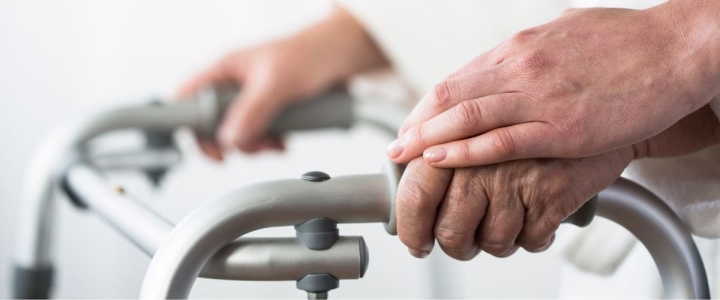
This safety net is further expanded by a fall detection pendant that uses built-in gyroscopes and sensors to keep track of the patient’s status. When it detects signs of a sudden collapse it automatically alerts the operators, who in turn dispatch the paramedics and call the relatives.
Since fragile seniors and patients with neurological diseases are often unable to stand on their own, the security of a quick reaction like this may save their lives.
Best Medical Alert Systems of 2024
| Rank | Company | Info | Visit |
1 |
Editor's Choice 2024 |
|
|
2 |
|
||
| 3 |
|
Get the Best Deals on Medical Alert Systems
Let our experts keep you up to date on the latest trends, news and deals on medical alert systems.

